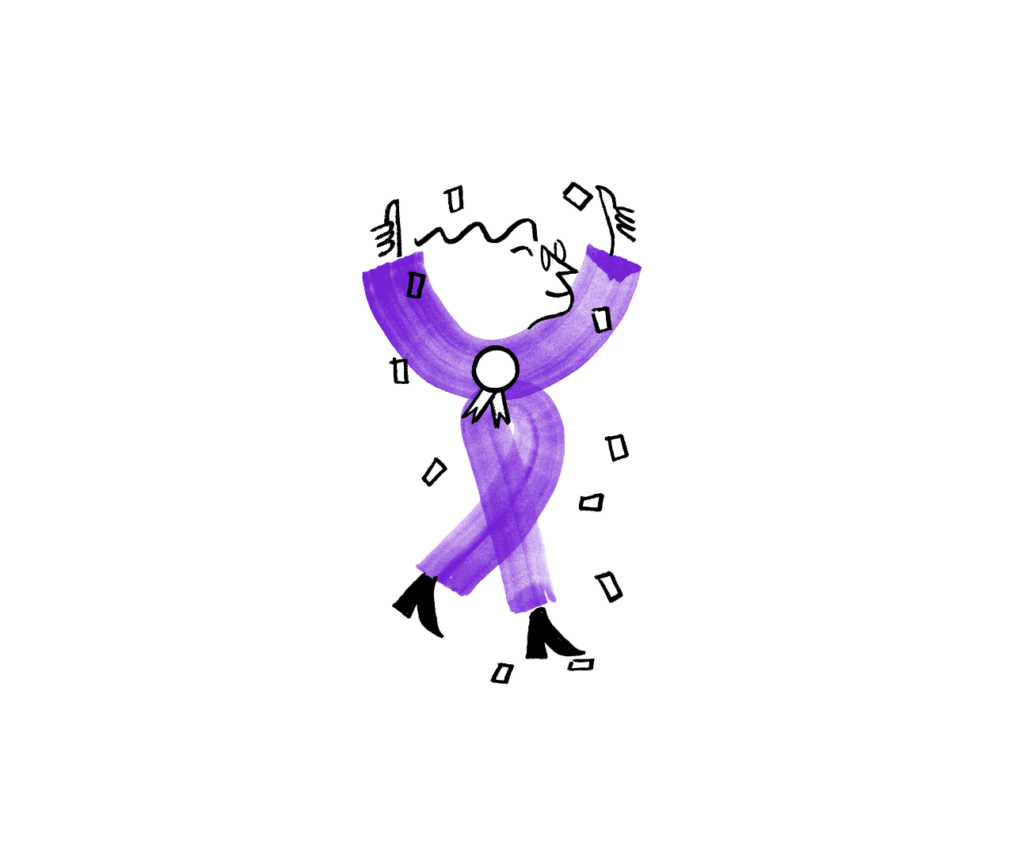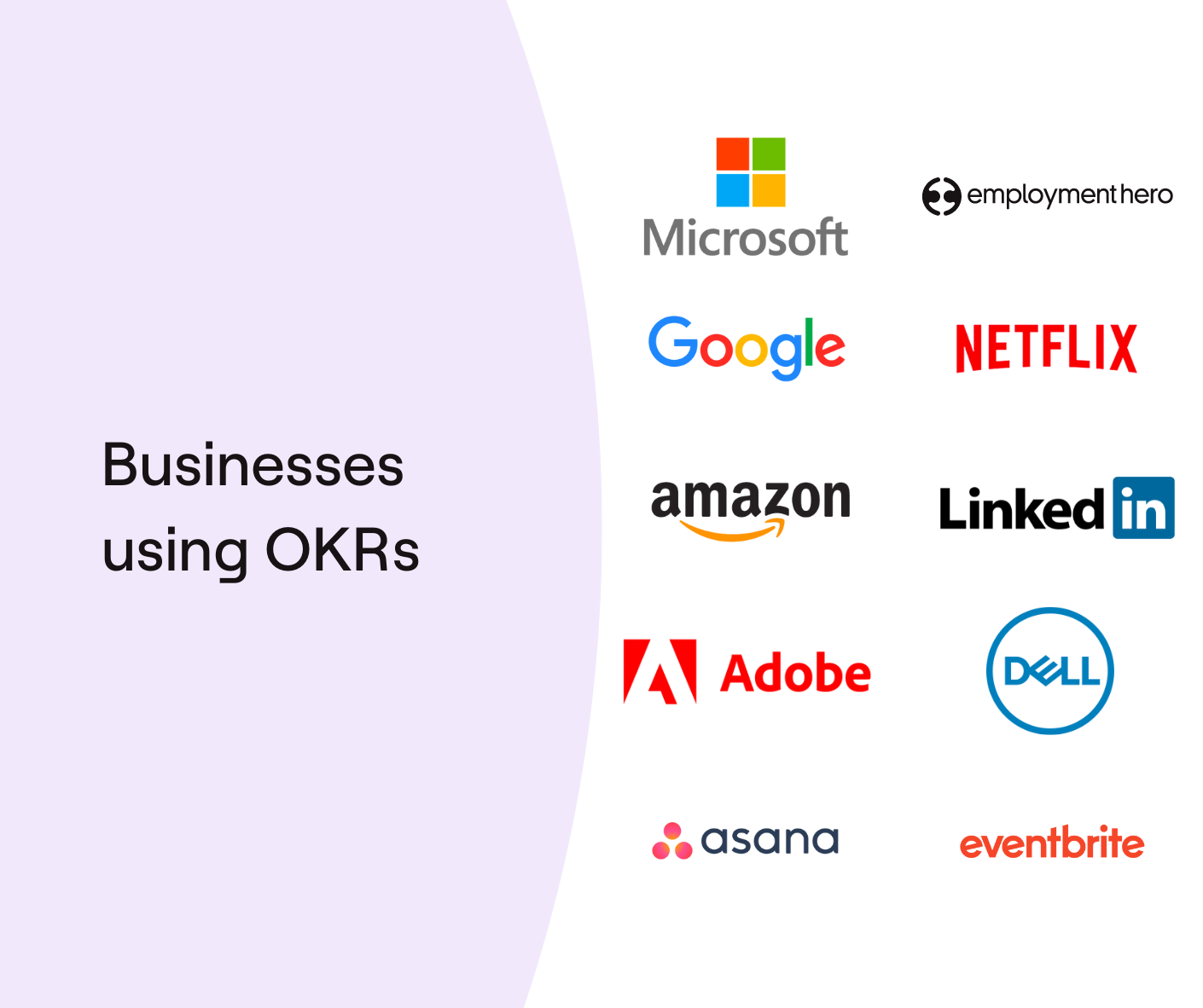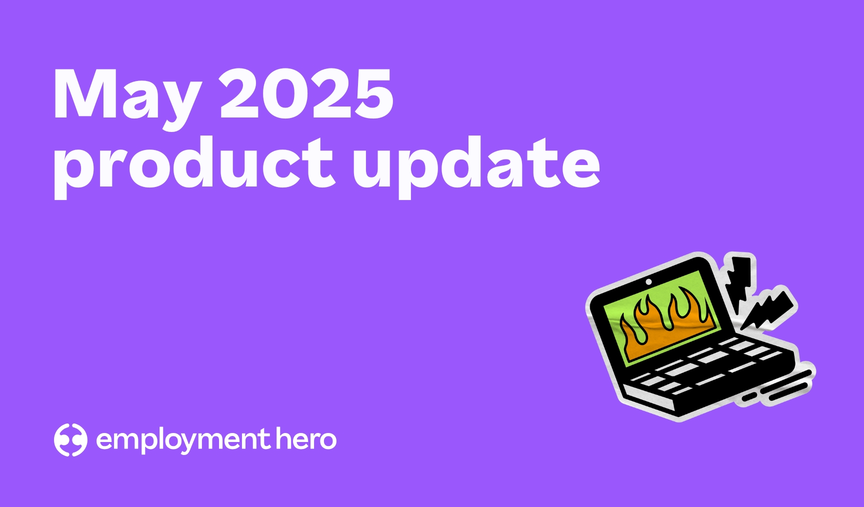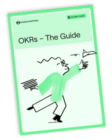Why the world’s leading companies use OKRs
Objectives and key results or OKR is a familiar buzzword amongst many businesses. But why should you use them? And why should you go through the effort of aligning your workforce with this new way of thinking?

We’ve touched on the ‘how” in our OKRs guide (which you should check out by the way), which gives an introduction to OKRs for those who haven’t heard about or used them. The guide is there to help you formalise some of your own. But now, we want to look into why some of the world’s leading companies are using OKRs.
A quick reminder of what OKRs are
If you missed our guide or need a refresher, this post won’t make sense unless we’re clear on what OKRs are! So here’s how we define them.
OKRs are a framework for defining and tracking goals and their outcomes within a business. The objective is qualitative, and the key results are quantitative. They are used to focus an entire business around one big, bold goal; A Big Hairy Audacious Goal (or BHAG) if you like. OKRs are usually set during a defined time frame and can be set for the year ahead, or quarterly if you’d like a faster turnaround. We’d suggest having yearly objectives with key results that can be measured quarterly.
If you were to start planning out or writing OKRs (we don’t want to get ahead of ourselves, so we won’t dwell on this too much just yet!) you would need to keep these two questions in mind:
- What do you want to accomplish? The answer to this will be your objective.
- How are you going to achieve this? These answers will give you your key results.
For example, within a human resources department an example OKR may look something like this:
Objective: Create a working environment our employees love
KR 1: Bring the team together for one in-person team collaboration session per quarter.
KR 2: Roll out 2 surveys per quarter to capture employee feedback on business and team alignment.
KR 3: Every employee has a weekly 1:1 with their responsible manager to capture feedback.
Key results give you a clear guideline of what you need to focus your effort on for that time frame to achieve the objective. Your objective must be ambitious and definite, and your key results have to be measurable. Now you know what they are, think about what your business objectives are, and what the key results are that will help you get there.
Why are they used?

Businesses such as Google, Linkedin and Netflix use OKRs. And it’s easy to see why such huge global companies are using them:
Clear alignment and direction
Effectively implementing OKRs provides a powerful means to align and connect all your employees with company goals. With this approach, your entire workforce gains visibility into overarching objectives, understanding their team’s role and their contributions to achieving these goals. This alignment, when implemented well, can foster a unified sense of purpose.
The visibility of company goals afforded by OKRs enables your business to provide clear direction to each team and individual. Employees understand how their efforts directly impact and contribute to the company’s success. This clarity can enhance resource allocation and management, ensuring that efforts are strategically directed towards achieving key objectives.
Also, OKRs give everyone in your company more insight into its inner workings. By providing visibility into goal progress aligned with the company’s vision, strategy and top priorities, employees gain a deeper understanding of their collective achievements. This increased transparency extends across the organisation, offering valuable insights into successful initiatives and areas that require further attention and improvement.
So it’s clear to see how OKRs can serve as a tool for fostering team alignment, providing clear direction and offering insightful perspectives for continuous growth for your people ergo, your business.
Increased productivity
OKRs can increase productivity for every employee through a clear focus on business goals. Data from Datalligence showed that highly aligned organisations grow their revenue 58% faster and are 72% more profitable than unaligned organisations. If an individual knows exactly what they are aiming for and can be recognised for their efforts towards certain objectives, key results or company goals they’re inspired to work towards a common goal. You can really boost individuals’ engagement and empowerment through your goal-setting process.
Employee engagement and motivation:
OKRs contribute significantly to employee engagement by instilling a sense of purpose and direction. When employees understand the overarching objectives of the organisation and their role in achieving them, it fosters a deeper connection to their work.
The motivational aspect of OKRs lies in the ambitious yet achievable key results that are set. By establishing challenging yet realistic goals, employees are motivated to stretch their capabilities and push beyond their comfort zones. This not only fuels personal growth but also cultivates a culture of continuous improvement within the organisation.
To further emphasise the effectiveness of OKRs in enhancing employee motivation, numerous success stories abound in the business world (more on those to come). Companies that have embraced OKRs have witnessed a notable boost in employee morale and commitment. These success stories serve as inspiring examples, demonstrating how the implementation of OKRs can transform workplace dynamics and increase overall employee satisfaction.
Employees have embraced them to great effect at Employment Hero coming up with ideas to push us further on our quarterly themes and to go above and beyond expectations in their role. It allows everyone to stand out.
Measuring success
One of the defining features of OKRs is their ability to provide a clear and structured framework for measuring success and progress. This clarity is instrumental in aligning individual and team efforts with your business’ goals. OKRs serve as a roadmap, guiding employees on their journey toward success and ensuring that everyone is moving in the same direction.
You can easily track the progress towards a particular business goal, and while you could use another spreadsheet to do that, we recommend our employee engagement tools. With your data in the clouds, you can easily track your team whether you’re interested in the CEO’s contributions or your new starter’s. It incentivises everyone to work towards a common goal and everyone can keep track of progress.
In the realm of measuring success, data and metrics play a pivotal role. OKRs enable you to set specific, measurable and achievable key results, making it easier to evaluate performance objectively. Measuring your distance to goals will help you identify areas for improvement and celebrate your team’s achievements.
Why do global businesses use OKRs?
Damon Anderson – UK Managing Director, Employment Hero
“The main reason we love using OKRs at Employment Hero is the transparency to align every person in the organisation to the company’s annual goals. With this method, each person can develop their OKRs to make sure they align with what the company is striving to achieve.
Key Results go so much further than KPIs or a regular “task list”, they have to be output driven and metrics driven. There are often a lot of initiatives and to-do lists behind achieving a key result – however, the key result is the output driving each person or team.
OKRs are also hugely beneficial in structuring 1:1s with your employees as you can quickly cover progress or potential roadblocks on particular OKRs. You don’t have to sit there and recall an entire 12 months of achievements either, but instead, you have a nice online method of capturing accomplishments and outputs without onus performance reviews.
Finally, we love using OKRs at Employment Hero because it helps with complete transparency across the company. OKRs also drive accountability across every team, anyone in the company can see where and what any other team or person is working on at any given time.”
Adobe
Renowned for its groundbreaking software products like Acrobat and Photoshop, Adobe has a well-documented history of success. However, a few years ago, the company faced a significant people management challenge stemming from outdated annual performance reviews. This cumbersome and time-consuming process was leading to an annual surge in resignations.
Recognising this issue, Adobe executive Donna Morris initiated a dialogue on the staff intranet, asking, what would happen if they were to do away with an annual review. Her goals were to inspire, motivate and better recognise contributions to the business. The response? An OKR system was introduced. Instead of assessing performance on an annual basis, Adobe embraced continuous performance management through a ‘Check-in’ programme. This three-part system commences with OKRs (internally referred to as ‘Goals and Expectations’), followed by regular feedback and discussions on career development.
Since the implementation of OKRs, voluntary attrition at Adobe has seen a significant decline, showcasing the positive impact of this performance management approach. This shift to a more dynamic and continuous feedback system has proven instrumental in retaining talent and fostering a more engaged workforce.
Upon assuming leadership at LinkedIn in 2008, former CEO Jeff Weiner introduced a mission and vision goal model (OKRs). He attributes the company’s impressive $20 billion success to the strategic implementation of the OKRs framework.
LinkedIn’s approach to OKRs is distinctive, with each team member tasked with setting three to five ambitious quarterly objectives. Interestingly, the importance of these objectives escalates as the team member moves up the company hierarchy. The tracking of progress within teams is facilitated through regular in-person meetings, ensuring that leadership teams stay closely aligned with how individual objectives contribute to broader business goals.
In these meetings, employees reflect on their achievements and areas needing improvement, fostering a culture of self-awareness and accountability. Leaders, in turn, acknowledge and celebrate successes while providing support where necessary. This dynamic approach to OKRs at LinkedIn showcases a commitment to both individual and organisational growth, underlining its significance in driving the company’s continued success.
What about startups and NFPs? Can OKRs work for them?
Yes, absolutely, we’ve got some success stories to share from these worlds too.
Mantra Health
Alex Radke’s tenure as Head of Business Operations at Mantra Health addressed a significant challenge – the difficulty in maintaining a focus on core priorities. With an initial issue of having 15 simultaneous projects, Radke revamped the existing OKR system. He introduced crucial changes by limiting Objectives to three at each level and adopting a cross-functional structure. This overhaul made OKRs easier to understand for his team.
The transformation at Mantra Health extended beyond process improvements. Early cross-functional alignment during the planning stage enhanced employee buy-in and eliminated conflicts during execution. It also clarified the importance of prioritisation, empowering employees to take charge of their projects and fostering strategic thinking within teams. The alignment process conveyed the message that project postponements were about sequencing rather than dismissing importance, encouraging a more proactive and decisive approach among employees.
Since Radke’s arrival, Mantra Health has experienced a notable shift in employee engagement. The emphasis on alignment at the planning stage has created a more cohesive organisational mindset. While not everything aligns perfectly, there is a growing unity in organisational thinking, where employees understand the significance of making strategic decisions collectively for the overall success of the company.
Emancipet (NFP)
When Emancipet CEO Amy Mills and her senior team aimed to set bolder goals for their mission of making veterinary care accessible to low-income families, they turned to the OKRs framework. Initially committed to this audacious objective by 2028, the pandemic temporarily shifted focus. By December 2021, with staff burnout and industry workforce challenges, Mills revitalised the ambitious goal. The OKR process not only energised the team but also provided a realistic plan. Collaborative discussions led to four key areas: prioritising veterinary staff well-being, opening two clinics, rethinking fundraising and pursuing a large-scale partnership.
The adoption of OKRs at Emancipet facilitated collaborative goal-setting and transformed how the team approached long-standing challenges, such as fundraising. Initially struggling with the difference between KPIs and KRs, the team realised the transformative nature of OKRs. The process of creating space to describe and measure a bolder future revitalised the team, conveying a commitment to changing the world. OKRs also facilitated organisational alignment, breaking down departmental silos and ensuring buy-in across the organisation. Despite the initial challenge of narrowing down to four goals, the discipline imposed by OKRs proved valuable, aligning resources and ensuring transparency in the budget allocation process.
Emancipet’s journey with OKRs exemplifies how the framework not only energises teams but also aligns organisational efforts towards audacious goals, fostering collaboration and discipline.
The wrap-up
Businesses use Objectives and Key Results (OKRs) to drive strategic focus, enhance collaboration and achieve (big hairy) audacious goals. The OKR framework provides a transparent and structured approach to goal-setting, aligning teams and departments towards shared objectives.
To keep your finger on the pulse of your business and the journey towards your goals, why not consider HR software? Employment Hero rolls in a tonne of engagement features from OKR setting to 1:1s to Shout Outs and Recognition so you can achieve and celebrate as a team, no matter where you are. All alongside a suite of tools to help manage the employee lifecycle from hire to retire.
If you’re looking to take the next step with how you manage your business’ goals, why not talk to a member of our team today?
Related Resources
-
 Read more: Product Update: May 2025
Read more: Product Update: May 2025Product Update: May 2025
Follow our May 2025 product update as we share all of the latest and greatest features we’ve released over the…
-
 Read more: The Construction Industry Scheme (CIS): A Guide For Employers
Read more: The Construction Industry Scheme (CIS): A Guide For EmployersThe Construction Industry Scheme (CIS): A Guide For Employers
Discover our Construction Industry Scheme guide. Whether you’re a business owner or HR professional, understanding CIS is key for compliance…
-
 Read more: Dealing with mental health in business—From a HR professional
Read more: Dealing with mental health in business—From a HR professionalDealing with mental health in business—From a HR professional
Discover our in-depth guide to mental health sick leave. We look at what it is, why it is taken and…












